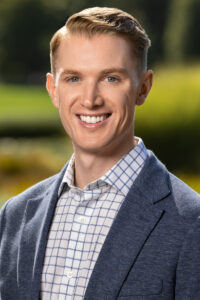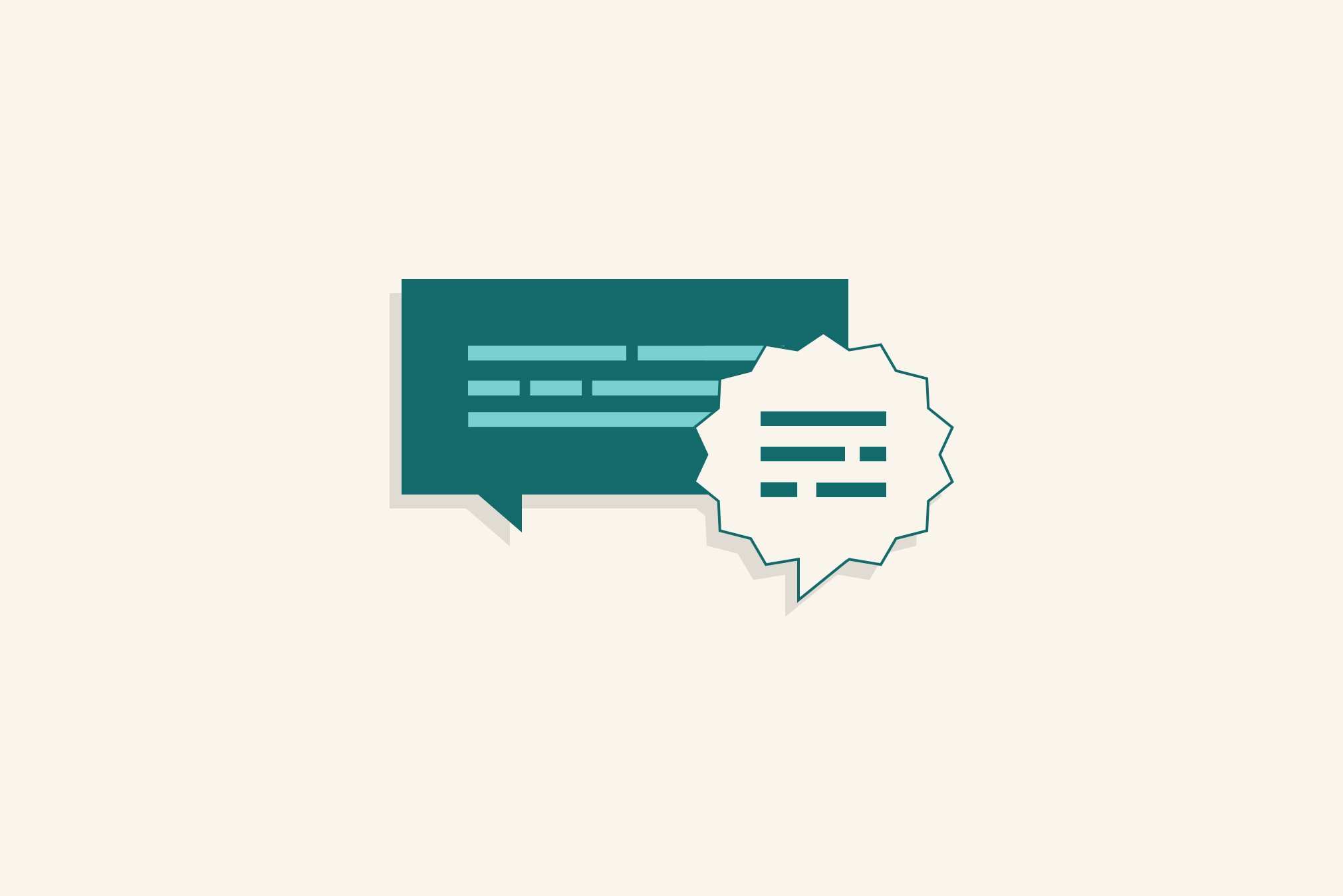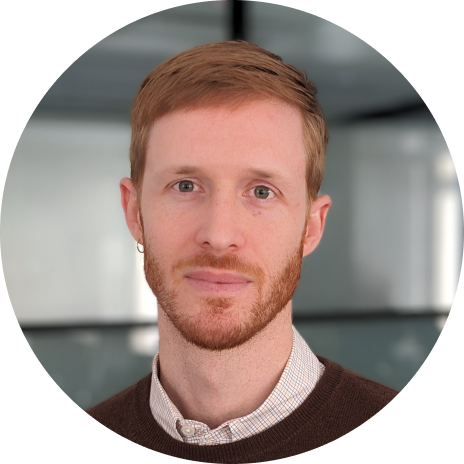Catching up with Sean Riordan, Director, Strategic Ventures at Stanford Medicine.
Each conversation with a Luminary Labs alum is an opportunity to reflect on what’s evolved and what has persevered over the company’s 15-year history. These conversations also remind us that even if technologies are constantly evolving, the need to understand risks and develop thoughtful applications for emerging tools remains constant.

Sean Riordan, Director, Strategic Ventures at Stanford Medicine.
Sean Riordan joined Luminary Labs in 2014 as an Analyst (a role we now call Associate). Over his nearly four-year tenure, Sean supported strategy development across multiple client projects and focus areas, including our work on open innovation programs like the Mood Challenge and the EdSim Challenge. He’s since left New York and is now happily settled in Denver, where he works in a hybrid role as a director on the Strategic Ventures team at Stanford Medicine. In his role, Sean supports teams across the enterprise to nurture and operationalize key strategic priorities. He’s currently working with Stanford faculty and practitioners on a new effort to guide the responsible use of AI across biomedical research, education, and patient care.
We recently connected with Sean to talk about his favorite Luminary Labs memories, his current work at Stanford Medicine, and more. Sean shares some of the things he learned during his time at LL that he continues to carry with him today.
Is there a particularly memorable problem or project that you worked on at Luminary Labs?
I actually have two, and they were both focused on digging into nascent or early-stage technologies.
Virtual reality (VR) was so buzzy in 2014 — like AI was last summer — but it was really lacking clear applications aside from gaming. For the EdSim Challenge, Luminary Labs worked with the U.S. Department of Education to call on innovators to develop augmented reality (AR) and VR games and simulations to prepare students for the 21st century workforce. It was super exciting to work with the federal government to understand how this new technology could be used to transform career and technical education. Being able to engage with that technology so early and seeing a federal partner identify the potential there and support that was really inspiring.
The Mood Challenge was exciting for similar reasons. Apple had recently released its ResearchKit, a framework that could be used to do large-scale academic-level research with data collected from mobile devices. There had been some work done to understand how data from devices could help us understand human behavior, but there was still so much to explore. Being able to help spur that ecosystem of research — in this case focused on mood — embodied some of my favorite things about Luminary Labs; we’re looking closely at what may be considered shiny objects at the time and asking, “what are the actual impacts?” or, “what are the use cases that can do good?”
What is something you learned at Luminary Labs that you continue to value today?
I joined Luminary Labs very early in my career; it was my second job out of college. One thing I’m extremely thankful for — even if it might’ve been a thorn in my side at the time — is the rigor that LL brings to its work. As an Analyst, I learned to have attention to detail and to think through every aspect of a project. At the time, I didn’t realize how valuable that would be as I progressed through my career. I think others might have mentioned this as well, but I’ve gone on to work in somewhat regulated organizations — I’m in academic medicine now, and I spent some time in pharma as well. It was really interesting to understand that, in order to do these fun, innovative projects within complex organizations, there’s a baseline of just making sure the rigor and the thought is there. Learning that very early on in my career has paid dividends.
The other piece that I really appreciated — and try to force myself to do today — is the importance of creating the space for blue sky, open thinking. Most consultants are type A, like myself, and say “let’s just get in and do the work.” Sara and Janna really made a point to interrupt that and say, “no, let’s chew on this a little bit.” That kind of thinking was really encouraged at Luminary Labs. We didn’t have Slack at the time, but we were constantly sending interesting articles around and I didn’t feel guilty at work spending an hour just nerding out over something or just going down a rabbit hole. Making time for that thinking was really novel at that point in my career, and I still force myself to do it a little bit, particularly when I start new projects.
Can you tell us about your current work?
I’m currently a Director on the Strategic Ventures team at Stanford Medicine, which includes Stanford’s School of Medicine and the adult and children’s hospital systems. I previously worked in a strategic planning function and have been on the Strategic Ventures team since last year. Part of my role has been helping to get this team off the ground and defining our norms. Our primary focus is incubating and operationalizing key priorities coming out of either the hospital systems or the school. Our team is now focused on taking a few of those ideas that don’t have a clear home within the enterprise shepherding them from strategy into execution.
One thing that I’ve really enjoyed working on recently is an initiative called RAISE Health, working on responsible AI for safe and equitable health. Launched last year, it’s a joint initiative coming out of both Stanford Medicine and HAI, Stanford’s Institute for Human-Centered Artificial Intelligence. It’s aimed at guiding the responsible use of AI across health and medicine, whether it be biomedical research, education, or patient care.
We’ve seen ethical challenges evolve across industries applying AI, but it feels particularly poignant in medicine, where lives are on the line. Consider care delivery: AI isn’t replacing your physician, it’s augmenting them. Maybe it’s allowing more face-to-face time with your doctor, as an ambient AI listens in and drafts notes. But what are the ethical implications? How do we handle patient consent? On the basic science side, we now have algorithms that can help discover new treatments and therapies. But what if those algorithms were trained mostly on data from white communities?
What’s the most exciting thing about your current role?
I think the most exciting thing is truly the faculty and leaders that my team has the honor of working with. You read about groundbreaking work coming from Stanford, and being able to partner and learn from them is just so much fun, and I’m constantly learning. The intellectual curiosity that I’m exposed to everyday is my favorite thing.
Is there anything you’ve read or seen lately that you want others to know about?
I’m doing a part-time MBA so I don’t have as much free reading time. There are a couple of newsletters that I follow. Ben Thompson has a newsletter called Stratechery. Benedict Evans has a weekly newsletter that I read. And Nikhil Krishnan has a healthcare newsletter called Out of Pocket that I like. I do my best to try to stay on top of things with the limited free time I have, but I would say a lot of my non-work, mental free time is currently at school.
This weekend I went camping and it was the first time I picked up a book and almost finished it in a day. The book was called The Rachel Incident. I’m from Ireland and it is very specific to my hometown of Cork, so I would recommend folks pick that up if they’re looking for a fun fiction read. When I do get the free time, I tend to enjoy novels.
Tell us about something that brings you joy.
I have fully leaned into the Colorado lifestyle since moving here. I didn’t ski until we moved here four years ago, and every weekend in the winter is now spent in the mountains. I would say that brings me a ton of joy. Similarly, I did not grow up with a green thumb or any exposure to gardening, but my husband is a huge gardener so we have a bunch of raised beds at home. We fill our free time in the summer by getting outside and planting things and cooking, and then we spend winter shredding down the mountains. Living in Colorado, being outside and breathing in the fresh air is really what brings me joy these days.


